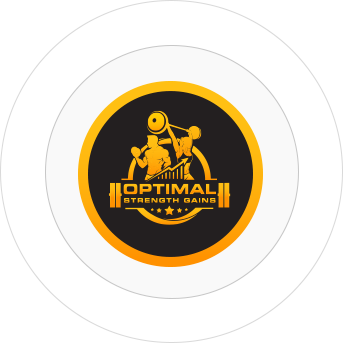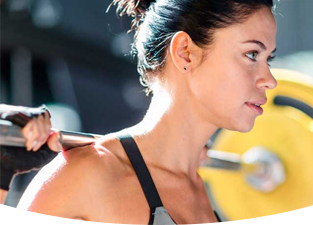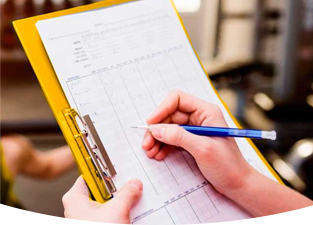FEATURES

We are proud to present you with Optimal Strength Gains features.

STRENGTH STANDARDS
Strength standards are objective benchmarks that shows how strong you are compared to other Strength athletes. Strength standards are beneficial when setting goals and tracking your individual progress.

STRENGTH STANDARDS
Strength standards are objective benchmarks that shows how strong you are compared to other Strength athletes. Strength standards are beneficial when setting goals and tracking your individual progress.
Level
The Strength athletes level is a product of your one repetition maximum (1 RM) in a given exercise combined with your body weight or weight class.
Body Weight
In general, the heavier you are the more absolute strength you can develop, which means that a heavier lifter can lift the highest amount of weight.
Height
Lifting weights involves applying force against a resistance. The amount of force you apply over a given distance shows us just how much work you have done.
Waist to Hip Ratio
Waist to hip ratio is an indirect measurement of your body-fat mass. A smaller waist to hip ratio and high body weight indicates more muscle mass and a smaller body-fat percentage.
Age
Someone who is in their 20’s will have a better potential to lift heavier and respond better to strength training in general, compared to someone in their 50’s.
Dominant Muscle Fiber Type
Fast-twitch muscle fibers generate more power and strength but fatigue much faster and require more time for recovery. Slow-twitch muscle fibers can sustain activity for longer periods.

EXPERIENCE BANK
The Experience bank gathers information about your progress after completing a program. It also guides you to the programs that you will most likely respond the best to.
Test Exercises
Each program has one to several test exercises, and each test exercise has an Experience bank for men and one Experience bank for women.
The Results
By completing the pre- and post “as many reps as possible” (AMRAP) test set in the test exercise, we can calculate your 1 RM, level and percentage increase or results.
Variables
Your results are tagged with your individual input variables which affects performance such as level, body weight, height, waist to hip ratio, age and dominant muscle fiber type.
Mirror Athletes
Your Mirror athletes are other real world Strength athletes who are similar to you in regard to strength level, body weight, height, waist to hip ratio, age, and dominant muscle fiber type.
Responsiveness
The Strength athlete log in profile will display how well you responded to the completed program compared to the other Strength athletes.
Guidance
The Experience bank search section will tell you which programs you most likely will respond best to, based on earlier input from other Strength athletes with similar traits.

AUTO REGULATION
Strength does not always evolve as planned in the Progression builder, since predetermined programs does not take into account the individual lifters fatigue level on a daily basis.

AUTO REGULATION
Strength does not always evolve as planned in the Progression builder, since predetermined programs does not take into account the individual lifters fatigue level on a daily basis.
Fatique
The predetermined weight increased from session to session is not always doable since it does not take into account your current shape, degree of readiness, stress and sleep level.
Load Progression
Autoregulation is a very useful system that automatically individualizes load progression and allows you to train with higher loads on days with low fatigue and vice versa.
Training Log
By comparing the target reps with performed reps and target reps to failure (RTF) with performed RTF, the load on the next set is either up- or down regulated.
Reps to Failure
RTF are based on how many repetitions are remaining at the completion of a set and adjusts load automatically to match athlete capabilities on a set-to-set basis.
The RTF Scale
The RTF scale is rated from zero to ten, and measures the feeling of effort, strain discomfort, and/or fatigue experienced during resistance training.
Individualization
Autoregulation not only individualizes week-to-week progression, but it allows for different days within a week to be progressed individually.

PROGRAM DESIGNS
After completing programs, the Program designs reveals how much (volume) and often (frequency) you should train, with what intensity (load and RTF), with which exercises and more.
Volume
Volume is the same as reps x sets and can be measured by total reps per muscle group per week. Volume can also be calculated as reps x sets x load, which is called volume load.
Intensity
The intensity of load are how much you are lifting (percentage of 1 repetition maximum), and the intensity of effort are how close you are to failure (Reps to failure).
Frequency
Frequency is how you spread volume and intensity across a training week. Frequency can be measured by training sessions per muscle group per week.
Progression Strategies
Volume, intensity and frequency are all interrelated and affect one another. The Program designer can choose between volume-, intensity- and/or frequency progression strategies.
Periodization Models
The manipulation of volume, intensity and frequency over time, can be done by utilizing periodization models like linear-, wave loading-, block-, and undulation periodization.
Rest Period
Rest period between sets is measured in seconds and minutes. A short rest period for example is 30 seconds and a long rest period could be 4-5 minutes.
Exercise Selection
Multi joint exercises are movements that activate several muscles and generate a lot of strength, and Single joint exercises or isolation exercises engage a single muscle group.
Tempo
E.g. “3-0-2-1”, means 3 seconds lowering the load (eccentric), 0 seconds in the bottom position (stretch), 2 seconds raising the load (concentric), and 1 second at the top position (peak).
GET STARTED
Create your profile today and start achieving your fitness goals.

The Strength Athlete
When you complete programs you will see how well you responded compared to your peer trainee. Learn which program design suits you the best and take action!

The Program Designer
Create and publish your own programs! Get feedback on how different Strength athletes respond to your program through the Experience bank and users Reviews.

The Personal Trainer
Interact with your clients! Let Optimal Strength Gains find the best strength training programs for customers with different needs and goals.